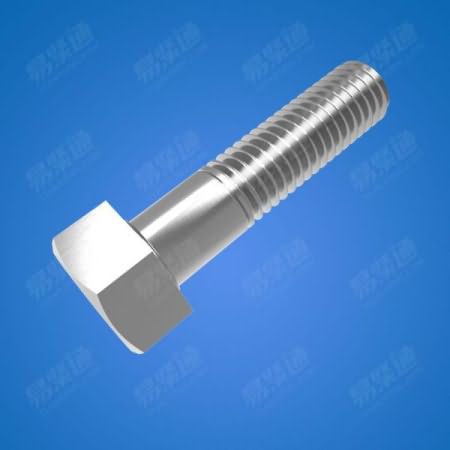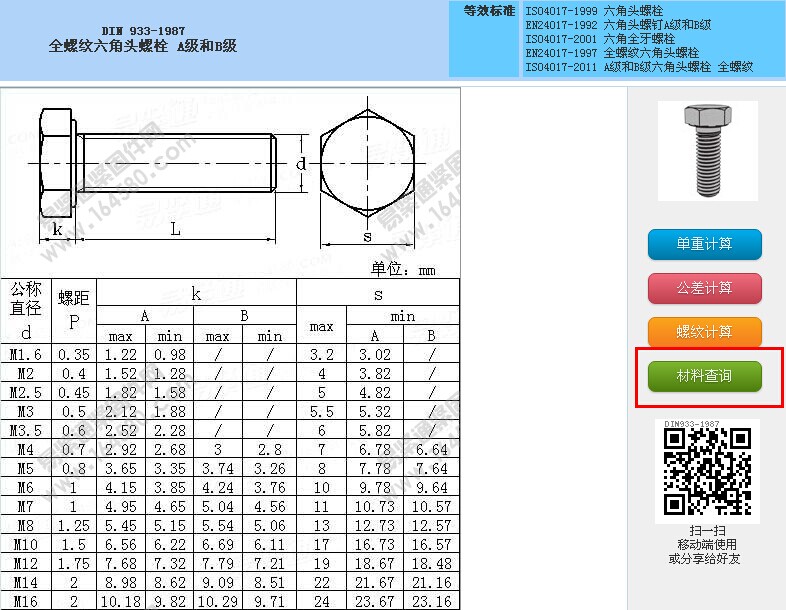How to use appropriate materials to manufacture screws that meet performance requirements and economic benefits is an important task in the manufacture of screws. This article analyzes and discusses the strength, corrosion resistance, temperature resistance and composition of materials from one to the other.
I. Introduction
The performance requirements of screws vary significantly depending on the purpose of use, and the performance of the screw can be closely related to the choice of materials. If the material is selected incorrectly or improperly, it may not be able to exert its performance, and the service life may be reduced or even occur. The failure of the accident, or increase the difficulty of processing, making it too expensive, so the choice of materials is very important. Before using materials, you should familiarize yourself with the classification, composition, properties, processing and application of materials. Whether you are engaged in screw design, manufacturing, quality control or testing, you should understand the relevant knowledge for your needs.
Screws can be made of many different materials, such as metal or non-metal, as long as they have material properties such as use and limitations, the selection of materials should not be too difficult. For example, if the screw needs high strength and high load, the steel will be considered. If it is needed for a corrosive environment, consider a protective layer such as a surface treatment or passivation film. Stainless steel or non-ferrous metal alloys are considered for use in more complex environments. If magnetism is not required, austenitic stainless steel or aluminum, copper alloys, or even non-metallic materials need to be considered. If good electrical conductivity is required, aluminum, copper or even silver will be considered. If high resistance is required, suitable non-metallic materials will be considered. Titanium alloys, aluminum alloys and carbon fiber materials are considered if high strength and low density are required. High temperature metals or nickel-containing metals are considered for use in high or low temperature environments.

Second, how to choose screw materials
The role of the screw engineer is to evaluate the scope of use of the screw and to quantify the design parameters. With this information, it is not a problem to choose the material. Chemical analysis is usually performed on various materials. As long as the chemical composition of the material is correct and the manufacturing equipment and processing technology are appropriate, the screws that meet the quality requirements are not difficult to manufacture. Therefore, the design engineer does not need to be very familiar with the best materials, equipment or processing technology. In most cases, after the design engineer has developed the environment and performance requirements for the screws, the manufacturing engineer decides which materials to use based on the deadline and economy. . Excessive restrictions on producers should be avoided, giving manufacturers maximum autonomy and manufacturing efficiency.
Before screw design and material selection, you should understand the cost of screw manufacturing. The cost of materials generally accounts for 30% to 80% of the total manufacturing cost. At present, the cheapest raw material is low carbon steel. When the carbon content is increased or alloying elements are added, the cost is also increased accordingly. The cost of medium carbon steel and alloy steel is obviously lower than that of carbon steel, stainless steel is more than 2.5 times that of medium carbon steel, and ultra-high temperature alloy and low temperature alloy can be more than 100 times. Unless there is special need, it should be based on the principle of cost saving. As long as it can meet the performance requirements of screws and does not need too good materials, the manufacturing cost is too high, but it is not economical. Therefore, engineers should pay special attention to the cost of materials. The cost of exceeding its performance requirements.
Third, the screw strengthIf the strength is the only consideration for the design, then the material is chosen to be non-steel because the steel is the most economical and versatile. Low carbon steel screws have a tensile strength of up to 60 ksi, medium carbon steel up to 120 ksi, low alloy steels up to 150 ksi, some superalloys up to 260 ksi, and screws larger than 400 ksi with modern manufacturing techniques. It can also be reached.
Stainless steel screws mainly include austenite, martensite and ferrite, and their strengths are significantly different. Austenitic stainless steel cannot be hardened and hardened, and annealing is the only heat treatment method. The strength can be improved by cold working and strain hardening. The former can reach 75~125 ksi, while the latter is about 70 ksi. Martensitic stainless steel can be quench hardened and its strength can be as high as 180 ksi after heat treatment.
The strength of aluminum and aluminum alloy screws is about 13~60 ksi, the strength of copper alloy screws is about 50~105 ksi, the strength of nickel alloy screws is about 70~130 ksi, the strength of titanium alloy screws is about 150~200 ksi, and the strength of non-metallic screws is 10 ksi. the following.
Recommended: Easy to tighten fasteners network - fasteners for steel materials


Aluminum Strip For Bottle Caps
Led Aluminum Extrusion,Aluminum Strips With Holes,Metal Flooring Transition Strip,Aluminum Channel For Led Strips
Jinan Xinhai Aluminum Industry Co., LTD. , https://www.jnxinhai-alu.com
![<?echo $_SERVER['SERVER_NAME'];?>](/template/twentyseventeen/skin/images/header.jpg)